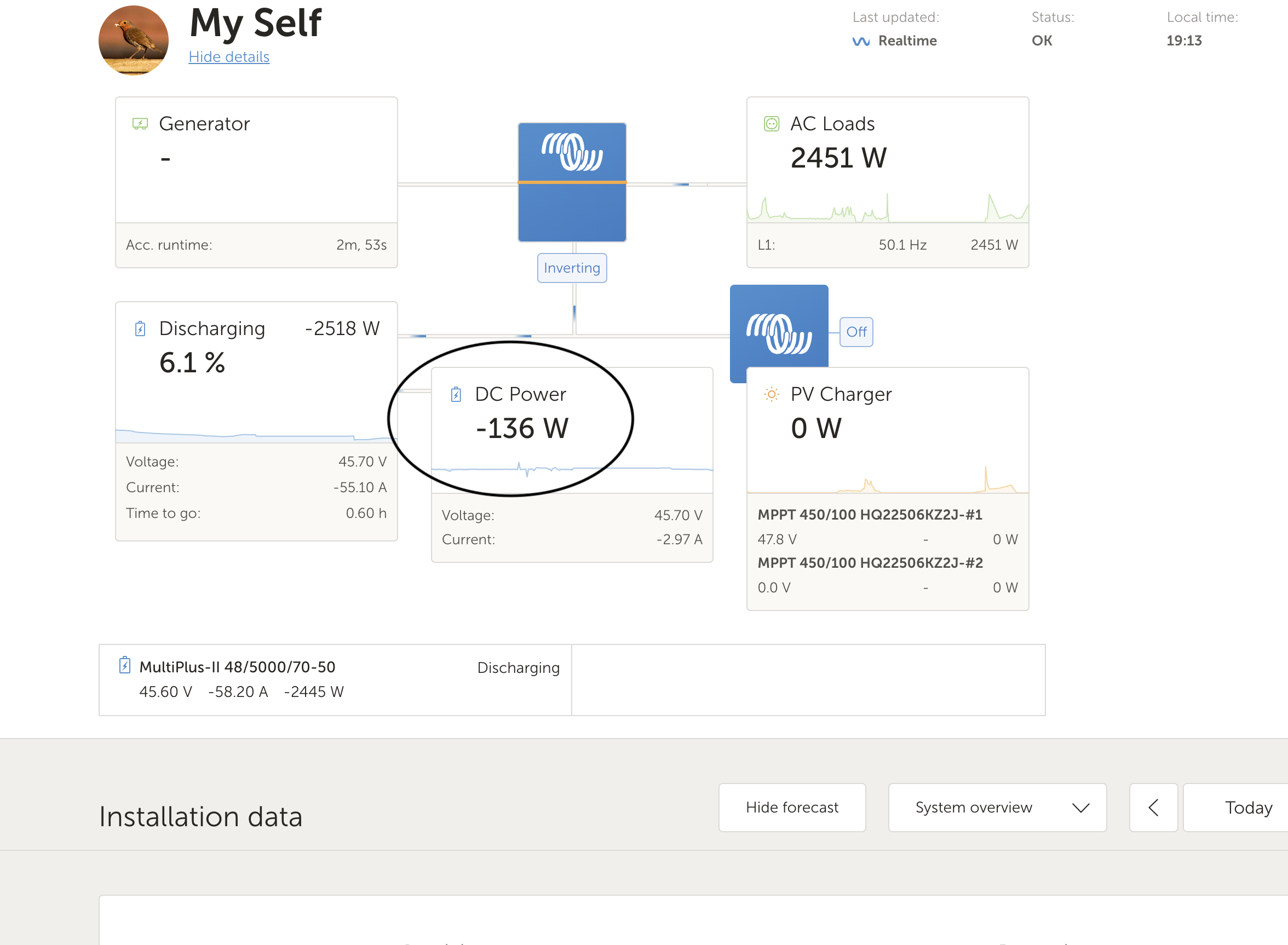Hello,
I seem to be getting inaccurate current with my SmartShunt 500A.
I have done the calibration, with nothing connected to the load side and has not made any improvements.
Not sure if it has only recently happened or has always happened.
I have tested it with a Victron IP22 30A Charger and is the only thing connected to the Load Side.
The below are the results.
| Charger | SmartShunt | Lithium Battery | Difference Between Charger & SmartShunt | Difference in % |
| 7.5A | 7.22A | 7.4A | .28A | 2.65% |
| 15A | 14.53A | 14.9A | .47A | 3.13% |
| 25.6A | 24.92A | 25.6A | .68A | 3.73% |
Also did a small current draw
| SmartShunt | Lithium Battery | Difference Between Charger & SmartShunt | Difference in % |
| -2.48A | -2.6A | 0.12A | 4.61% |
| -5.61A | -5.9A | 0.29A | 4.91% |
What do you guys reckon is happening here? Is it within spec or how do I make it more accurate?


